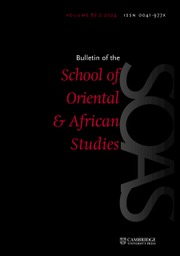At a time when literature, especially pre-modern literature, is vanishing from the curricula of Arabic degrees, and if taught is given meagre space, this anthology, by four of Italy’s most distinguished Arabic scholars and most experienced translators, offers a better survey of the pre-Islamic, medieval and early modern fields than anything that has yet appeared in a European language. It is lively, readable and accessible, and at the same time meticulously scholarly. Even specialists will find much to discover in it, and even readers whose Italian is minimal, like this reviewer’s, will be able to follow the translations and profit from the insights they afford. Transliteration follows international conventions, making the wide-ranging apparatus easy to use
As well as presenting a broad spectrum of topics, genres and medieval to early modern intellectual stances, of which more presently, the anthology breaks new ground by incorporating ongoing scholarship on manuscript studies and book history in the form of illustrations, foregrounding the fact, which has been largely ignored until recently across all fields of Arabic studies, that since ideas circulate physically through books, the physicality of books, manuscript or printed, matters in the history of ideas. There are black and white in-text reproductions showing how some styles of manuscript book illustration changed while others remained largely the same across the centuries, plus a sequence of plates that are used to discuss the mise en page of manuscripts and how typefaces and print and lithograph book formats (and the appearance of scholarly authority) developed, with or without reference to manuscript traditions, in Europe and in the Middle East, from the sixteenth to the twentieth centuries. The sources of all images and texts are given in detail, as are relevant secondary sources, making this a reference resource that researchers will want to keep to hand on their desks.
Designed in the first instance, however, as a reader for students, the book adopts a thematic structure in keeping with the spirit of adab, the term for polite learning and the manners arising from it that evolved across the centuries but remained a key point of cultural reference throughout the periods covered. Fifteen chapters, each with its own brief general introduction, contain some two hunded and forty translated passages, each concisely contextualised and footnoted, representing just under two hundred authors, some well-known and others relatively, or occasionally very, obscure. The chapters bring a bundle of different perspectives or thought categories – e. g. those of pre-modern philosophers or historians – to bear on a given theme, and each theme or topic also serves as a focus for general concepts within the culture, such as, to take only literary ones, the notions of imitation, competition and innovation around what became established as canonical forms (Chapter 1, “Modelli”).
The translators’ aim is to enable readers to browse, pick up the signposted connections and make connections of their own within and across chapters. The benefit of a collaborative venture such as this is that it offers both balance and a wealth of interpretative perspectives, and the strategy is enhanced by the occasional use of translations by other Italian colleagues. The result is a rich and intriguing new approach to the history of over a millennium of Arabic literature, which tacitly challenges existing narratives and demarcations, and is attuned to newer topics, such as early modern Christian Arabic travel writing (pp. 533-7), while also showing acknowledged (but perhaps not often read) foundational classics of Arabic didactic philology in a fresh – or their original, sometime hilarious – light (pp. 347-8). Whether it is the skill of the translators or the nature of the language, Italian seems particularly suited to rendering the supple succinctness of medieval Arabic dialogue and narrative.
The book is produced affordably to a high standard in a convenient format, with an apparatus that includes primary and well-chosen, up-to-date secondary bibliographies, maps, a very helpful chronological and geographical table of authors, a glossary of literary genres and formats, and an index of persons. A QR code gives online access to the Arabic of the translated passages in the editions cited. It is hard to find anything to fault in a work which will surely prove its usefulness for many years to come as a cross-disciplinary research resource in Arabic and Islamic studies, and as a learning and teaching resource and source of ideas not just for the minority, other than in Italy, of students who are able to read Italian but also, more widely, for both specialists and comparatists.


